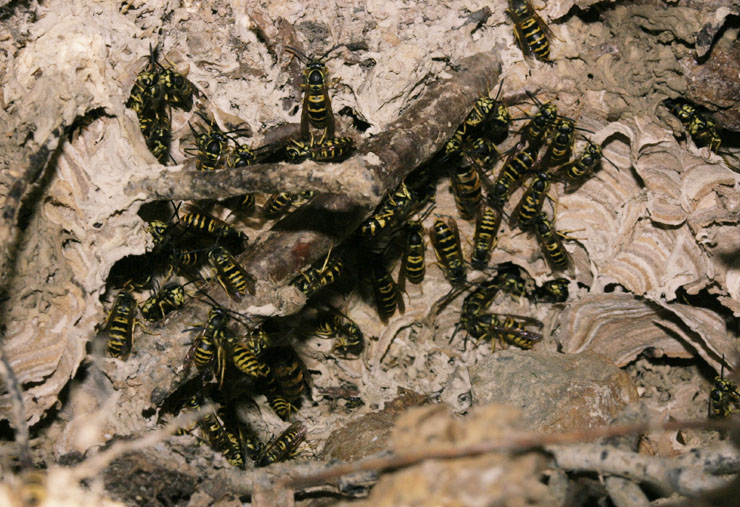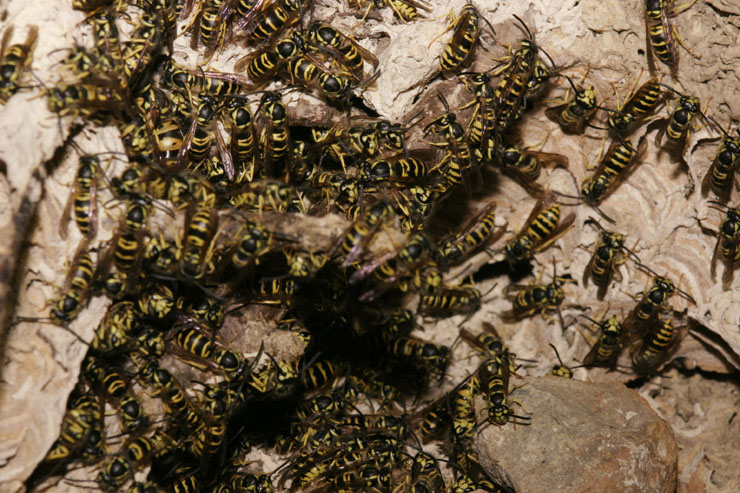Just a few posts ago, I featured some yellowjackets working on their underground nest. Today, I discovered I was not the only one who had found them.

Sometime in the last few days, something had dug up the opening into the nest and removed several large portions of comb, leaving them strewn about the ground nearby. It was a bit curious, because the excavation wasn’t very deep at all, amounting to only about 20 centimeters (8 inches) at most, and maybe the same width – it didn’t seem enough to hold the number of combs I found. But the yellowjackets were undeterred, and were very busy on the exposed portions of the nest. Note, to the right mostly, the multi-colored swirls indicating the paper shells of the nest itself.

From the looks of the damage, this certainly wasn’t any human’s work, and I got no impression of a large animal because the area of disturbed soil wasn’t significant, so my guess is a raccoon or opossum. It just strikes me as odd that they would tackle this. Yellowjackets aren’t honey producers, and the larva are fed by pre-chewed insects that the adults capture. These combs, all apparently older and empty, are just like paper wasps’ nests, and house only the eggs and pupae. While this might be an enticing meal, it seems like a tough one to obtain.
Most of the hymenoptera have really lousy night vision, much worse than ours, and thereby very much worse than a raccoon’s or opossum’s. They usually do not fly at night at all, even when the nest is threatened. But they’re more than happy to swarm onto something if it comes within reach, which may be why the layers of nest visible in my shots remains undamaged: the old stuff near the surface wasn’t hard to tear out, but when the nighttime marauder got to the active nest a little deeper, it encountered the standing guard. The photos above were from daylight (though flash assisted) – the image below was taken at night, showing the sleeping positions of the yellowjackets.

Yep, stick your hand in there, see what happens. I’ve had my fill of things like that, and don’t care to star in any YouTube videos just for your amusement.
When I went out to seek this shot, I did so very quietly and with the assistance of a bright flashlight. Not to see the bees as much, but to try and catch the return of the marauder. I saw nothing, however, and the nonagitated state of the bees would seem to indicate that the night had been quiet. Perhaps the raccoon or opossum had learned its lesson. Or was returning with a bee smoker…
Can I make an amateur naturalist’s lesson out of this? Perhaps I can. If there are areas you frequent, it sometimes helps to look around carefully and pay attention to details, because then situations like this become obvious, and you have some clue as to what is happening when you’re not there. This can provide an opportunity to return and catch sight of the drama that often unfolds at night, but also to illustrate a story even if you don’t see what actually happened.
















































